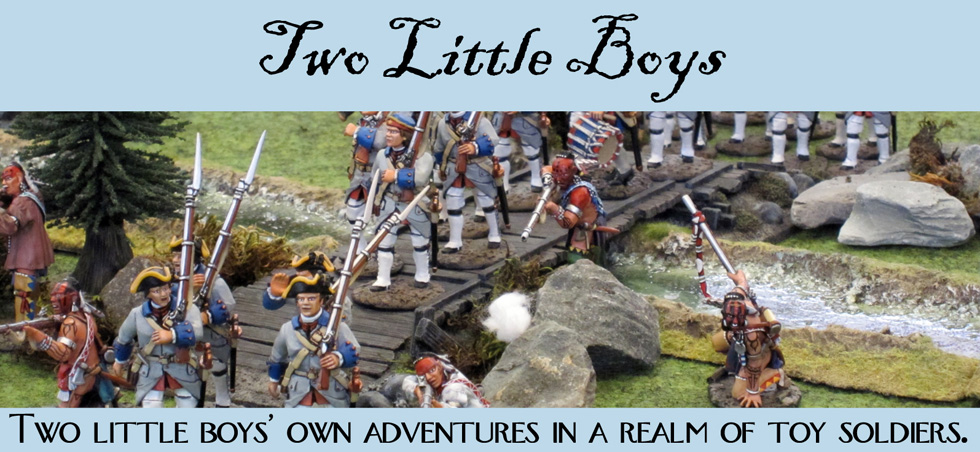August 2010 saw us heading for Eastern Front, a wargames show in Norwich, Norfolk.
 |
| John Jenkins - Fort Number Four |
This was to be Norwich’s first Wargaming show for many years, we invited friends from Stoke on Trent to join us. We used a lightly modified version of Games Workshop’s Lord of the Rings skirmish game rules; easy and fast with an emphasis on fun. The layout was 9’ by 5’. A skirmish of the French Indian War. We used the ‘Fort Number Four’ (now sadly discontinued) as a focal point for one end of the set-up, with a force of French Infantry and Native irregulars pushing in from a forest at the other end. |
French Infantry marches under fire.
|
Having never publicly shown our collections, we discovered our terrain didn't go very far on the large table. We did have a few things; a beautiful river/stream, sourced from Italy, a collection of rocks, mainly railway ballast and slate, a superb resin 'wooden' bridge, from Snapdragon Studios, (unfortunately no longer trading) and an adequet collection of model trees of varying scales, the largest firs (available in most railway or model shops) fixed into resin Snapdragon Studio trunks.
To bulk this out we needed something more, as it was going to look very bare; by chance James spotted the moss from his shred roof, and the morning of the game gathered a great bucket full, when arranged among the rocks and trees, it added a very natural element to the battlefield and made a huge difference.
 |
| I got one! |
The scenario was simple: The French and Indian force must advance across the river and close on the civilians, light infantry and grenadiers occupying the fort whilst the British force had to hold off the attackers for as long as possible - a British relief column of regulars was on its way but would be held off table until it was sorely needed. The spectacle was the most important thing, with the game progressing throughout the day, so passers-by could watch the attack unfold.  |
| "Fire at will!" |
 |
| Family day outs were different back then..... but just as exciting! |
Looking at the pictures of the layout after the show it was the trees that we felt we wanted to improve on most, something larger and less regular in shape than the bottle brush style we had. We welcome any suggestions on where to get better 54mm trees! Also more trees - could we ever have enough? |
| "Two gockles of gear on the wall, two gockles of gear! Sarge!" |














